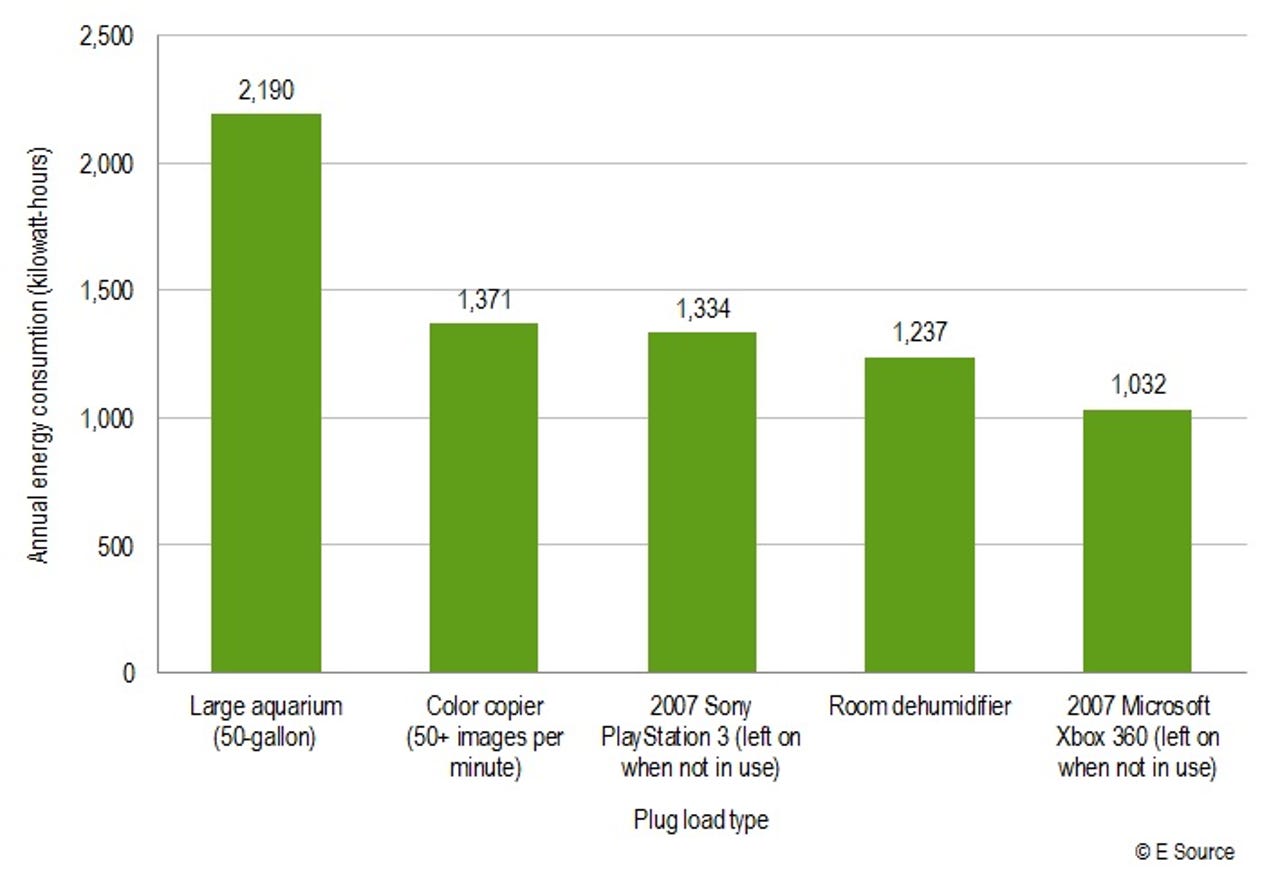Tis' the season to reconsider gadget power consumption

Ever wonder how much electricity all the gadgets in your home office or living room entertainment center suck up on an annual basis?
The latest guess-timate is that the so-called "plug load" for stuff like this accounts for 15 percent of all residential electricity consumption, according to a new white paper published by E Source.
That's why there has been so much of an emphasis for the past several years on ways to keep power consumption for gadgets and appliances at a minimum.
What are the biggest offenders?
The chart below offers some insight, and the answers may surprise you. It turns out that a 50-gallon aquarium with all its filters and heaters and lighting and such consumes an average of 2,190 kilowatt-hours (kWh) per year, That's more than twice the amount associated with a 2007 Microsoft Xbox 360 that has been left on but is not in use.

I'll bet you thought the gaming device would be the bigger offender!
One reason that the aquarium scores so high is that electricity is needed constantly to keep the environment safe for the fish and plants inside. There really isn't a "phantom mode" for fish tanks, so the best you can do is buy the most energy efficient products possible.
Trend-wise, the gadgets that use the most power in their active mode are, not surprisingly, those that have some sort of heating feature associated with them - hair dryers, microwave ovens, popcorn makers and toaster ovens.
The good news is that energy intensity for many of these things is actually decreasing, thanks to updated technology. (How old is your hair dryer or iron?)
The biggest projected change noted in the E Source paper is for residential lighting, which is project to decrease 53 percent in energy intensity between 2010 and 2035. The data looks at energy intensity as the ratio measuring thousands of Btu (British thermal units) per square foot.
The intensity for televisions and set-top boxes is also trending in the right direction, although with a much smaller improvement over that time (about 9 percent).
What does that mean for the average homeowner?
The Consumer Electronics Association and National Cable & Telecommunications Association figure that the changes recently agreed to by 15 leading players in this market that could eventually result in annual residential electricity savings of $1.5 billion.
The framework for this is the Set-top Box Energy Conservation Agreement, which goes into effect on Jan. 1, 2013.
The initiative requires that at least 90 percent of all the set-top boxes deployed after that data to comply with the U.S. Environmental Protection Agency's Energy Star 3.0 efficiency specifications.
Another provision that could have a big impact: cable operators will provide a software download that will offer "light sleep" features to more than 10 million digital video recorders that are already in U.S. homes. This feature will reduce the phantom load these devices consume pretty much immediately, provided you apply the update.
The companies participating in the new conservation framework include Comcast, DIRECTV, DISH Network, Time Warner Cable, Cox, Verizon, Charter, AT&T, Cablevision, Bright House Networks, CenturyLink, Cisco, Motorola, EchoStar Technologies and ARRIS.
So, come the new year, your home entertainment center might take a step toward becoming a bit more energy-efficient, without you necessarily doing anything in particular.
But it may be time to ask what other proactive measures your household can take to reduce power consumption from attic to basement.